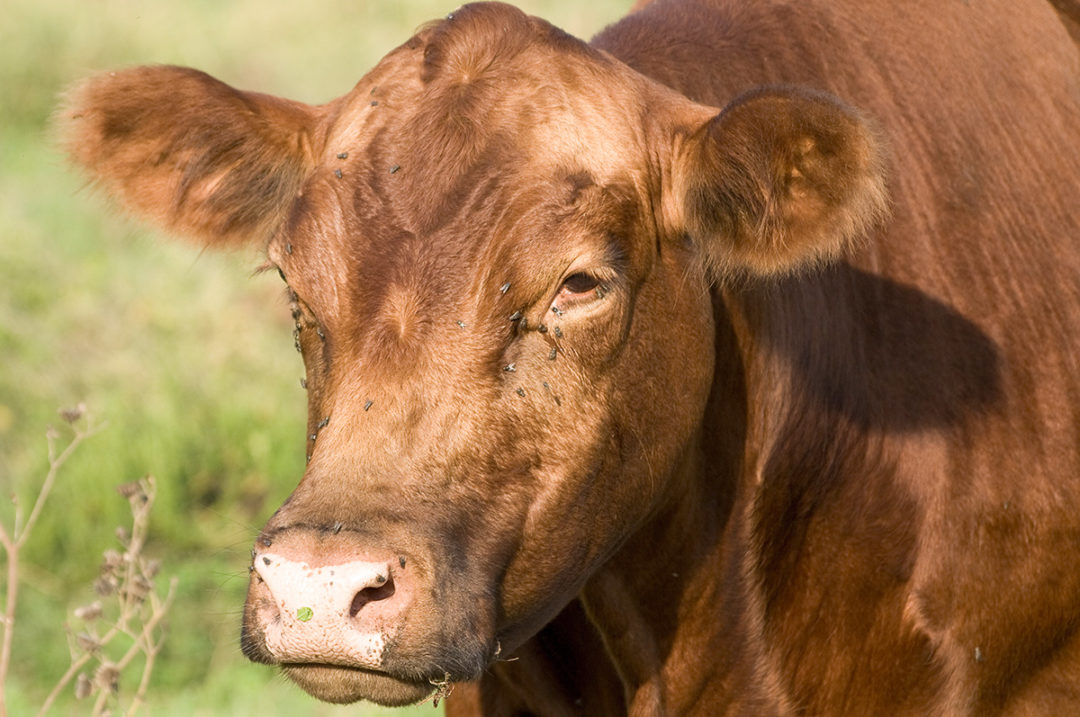Every farm that has production animals has a fly problem. Not only are flies a nuisance to your herd, but they can transmit diseases such as pinkeye, staph and strep infections. Many producers think that when a cow shakes flies off or swats them away with her tail, the issue is over. It isn’t. However, by controlling flies, you can improve cow comfort, lower disease transmission and minimize production losses.
Flies are extremely sensitive to temperature and moisture. Weather conditions can cause fly populations to vary as much as fivefold and cause peak population timing to vary by up to two months. By starting fly control in April, May or even June, fewer fly eggs will be produced early, therefore reducing the future hatch numbers.
Types of flies
Many different types of flies can cause issues in your herd such as pinkeye, reduced feed efficiency and lowered productivity.
- Horn flies: They breed in fresh undisturbed manure, typically in a pasture, and cluster in large numbers on the backs or sides of cattle.
- Face flies: They play a significant role in pinkeye transmission in summer months. Face flies obtain their nutrients by feeding on secretions around the eyes, nostrils and mouth, and easily spread the disease after the first case is confirmed. They prefer range cattle and drylots and require extremely fresh manure for breeding.
- Houseflies: They are usually the predominant species of fly around livestock. Non-biting houseflies are a nuisance to animals and will feed on anything.
- Stable flies: Looking like houseflies, stable flies are very vicious biters that suck blood. These flies tend to feed several times a day, ingesting one to two drops of blood at each meal. These flies tend to feed on the lower part of cattle’s legs.
Controlling flies before they become problematic
Your herd will not immediately recover from the effects of flies and fly bites. The economic impact can linger after flies are no longer present, so it is key to control flies before they become an issue.
Sanitation, moisture control and manure management are the most critical aspects of a successful fly control program. Operations that can control the environment and limit the number of fly breeding sites will have the best success with an integrated pest management system. It is always easier to prevent a heavy fly buildup than it is to try to manage a large fly population with insecticides. Spreading manure helps control the egg and larvae, but only if the manure is spread thin and allowed to completely dry out.
Although controlling manure and organic debris controls the maggots and larvae, adult fly populations have to be killed. Adult flies can be controlled with residual insecticide sprays, baiting, eartags, fly tapes and fly traps. When using chemical control, make certain the product you are using is approved for use on or around beef cattle. Chemical control includes self-applicators (dust bags or oilers), boluses, eartags, wet sprays, dips, systemics, pour-on or spot-on treatment, feed additives, area sprays, baits, larvicides and/or residual sprays.









